While all of the above horses were North American, white Thoroughbreds are found elsewhere, too. Racing and produce records, and especially colours of offspring, are sometimes hard to find, since these horses come from different registries and sometimes are registered in another language.
The pure white colt Mont Blanc II, by Murghab out of Tharsine, was born in France the same year as White Beauty. His foals were registered as several breeds: Thoroughbred, Selle Francais, Ango-Arab and Trotter. He reportedly sired nine registered whites. His white Thoroughbred daughter Blanche Fleur produced several white or mostly white foals. It is unknown if this white line is sabino or Dominant White, but the description of some of his offspring as being marked like Clydesdales suggests sabino.
In Australia, the unraced colt High Rail Curious (foaled in 2004, by Highrail Danehill) carries both sabino from the sire's side (inbred to Northern Dancer) and what appears to be DW from his white dam, Like A Gambler, who in turn was sired by the speckled white stallion Colourful Gambler. Colourful Gambler got his colour from his sire, Khaleben (registered as white-bay), whose dam, Glacial (1966, by Grey Marwin—Milady Fair), was all white with chestnut in her mane and tail. Glacial's dam, Milady Fair (1960, by Jambo—Silver Gown, by Pageant), was described as bay sabino and produced another white Thoroughbred named Miasmic in 1971, proving that this line of whites began with her. Again, without DNA testing, there is no way to be sure if these horses are DW or extreme sabino, or even some of each.
Another white filly that raced in Australia was The Bride, foaled in 1991, by Star Shower—Salomeneo, by Idomeneo. She produced one white and one grey Thoroughbred foal, but it is unknown whether she was DW or maximum sabino. Her white son, Spooky, died at age 4, and progeny records are not shown for the grey daughter, so this line may have ended.
A white New Zealand-bred filly named The Opera House sold for $270,000 at the Magic Millions yearling sale in Australia in 2009. By Zabeel—Carmina Burana, by Star Way, she won one and placed five times in eight starts. She and the winning 2002 white filly Legally White, sired by Zabeel's son, I Conquer, out of Matilda, by Hermod, probably are both extreme sabino, but DW cannot be ruled out without testing.
Haku Taiyu was the first white Thoroughbred born in Japan. Foaled in 1979, by Long Ace—Homare Bull, by Double Mark, he made four starts but failed to place. He has sired at least five white foals, one out of the 1983 Japanese-bred white mare Kamino White.
Shirayukihime, a white Japanese mare born in 1996 from solid-coloured parents (her sire was the great Sunday Silence) has produced seven white foals and one grey between 2003 and 2011. Two have blue eyes or partly-blue eyes, suggesting that overo is present, although sabino is there, too, through the Northern Dancer—Halo “nick” that has produced many brightly-marked sabinos. Her pure white daughter Yukichan is a stakes winner in Japan, making this the most successful of the white bloodlines anywhere. Based on the high percentage of whites being produced, this is not Dominant White, but a combination of overo and sabino. With such excellent pedigrees, this could be the start of a line of successful white and pinto race horses.
In the British Isles, there reportedly have been as many as 30 whites born, but what type of white they are is unknown. The White Admiral, registered as white, is another Northern Dancer descendent, being by the multiple Group 1 winner Revoque and out of Stage Debut, by Decent Fellow. This gelding was born in Ireland in 2005 and raced over hurdles, managing a couple of thirds.
In September 2011, a white colt with chestnut ears was born in South Africa. Named Gran Blanco, the colt is by graded stakes winner Kahal (a Northern Dancer descendant) out of Perakeen, by Rakeen (by Northern Dancer). His sire and dam have almost no white, so he could be another DW mutation.
There are, of course, numerous other white or mostly white Thoroughbreds, but not all make it to the track or produce offspring that race. Because of their colour, they are often found being used to produce exotic sport horses.
Despite the relative few Dominant Whites, with the maximum sabinos added to the mix, the time will come when it is not such a big surprise when a white or wildly spotted Thoroughbred sets foot on a race track.



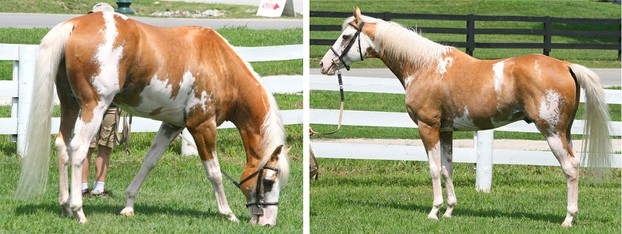
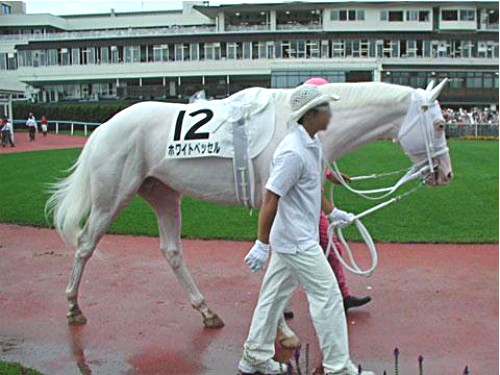




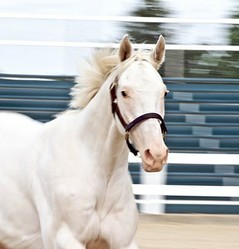

 Versatile Nova Scotia Duck Tolling Retrieverson 08/02/2014
Versatile Nova Scotia Duck Tolling Retrieverson 08/02/2014
 Should You Spay or Neuter Your Puppy?on 08/12/2014
Should You Spay or Neuter Your Puppy?on 08/12/2014
 Horse Racing History: the Preakness Stakeson 05/15/2014
Horse Racing History: the Preakness Stakeson 05/15/2014
 Dinosaurs Will Be On Display in Trenton, Ontario, Canadaon 07/29/2013
Dinosaurs Will Be On Display in Trenton, Ontario, Canadaon 07/29/2013

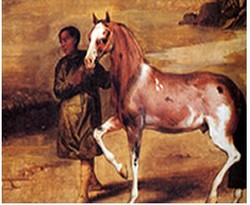
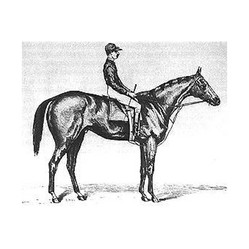
Comments
Great article!